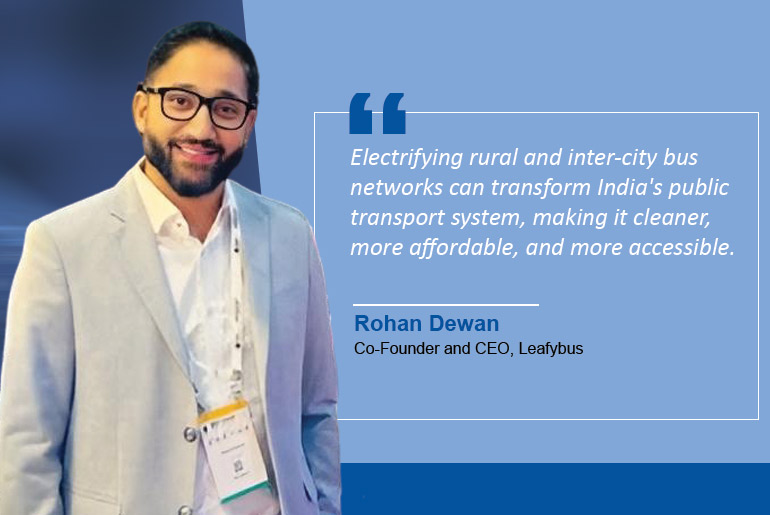Electronic vehicles (EVs) are being seen as a potential solution to pollution and rising fuel costs, the adoption of EVs at a mass level might be a turning point auto industry. While major cities have started embracing EVs, rural and inter-city bus networks are yet to catch up. These buses are lifelines for millions, they connect remote villages to urban centers. Most of the buses are still running on diesel, worsening air pollution and increasing operating expenses. Shifting to electric mobility in these networks could lead to a more sustainable and cost-effective transportation system.
The Case for Electrification
India has a large bus network that serves as the backbone of public transportation. But the continued dependence on diesel is straining not only the environment but also the pockets. Diesel buses contribute significantly to air pollution, and unpredictable fuel prices make operating costs unsustainable. Expanding electrification to rural and inter-city routes would lower emissions, reduce costs, and improve transportation accessibility in remote areas.
Although electric buses have a higher upfront cost, they offer long-term financial benefits. They require less maintenance, eliminating many expenses associated with diesel engines. Over time, the savings on fuel and repairs make them a more economical choice. Government initiatives like FAME II provide financial support to make EVs more affordable. On an environmental level, electric buses produce no exhaust emissions, which might help India meet its climate commitments. Moreover, integrating solar-powered charging stations can further reduce dependence on non-renewable energy sources.
Overcoming Challenges
Switching to electric buses has many benefits, but there are also big challenges that need to be solved. One of the biggest problems is the lack of charging stations, especially in rural areas and on highways that connect cities. Without enough charging points, electric buses may not be able to run smoothly over long distances. To make electric buses successful, both the government and private companies must work together to set up more charging stations, especially in places where buses travel the most. Without enough charging points, buses will not be able to run smoothly, and drivers may hesitate to switch from diesel to electric.
Another big challenge is cost. Even though the government offers subsidies, electric buses are still expensive for many transport operators, making the transition difficult. Leasing options can help reduce the financial burden, but they may not be suitable for everyone. The initial investment remains a concern, and some operators might take longer to shift away from diesel. Battery technology is improving, with efforts to make batteries last longer and charge faster, but there are still limitations. Charging times and costs need to improve further to ensure electric buses can operate efficiently on longer routes. With continued advancements and better financial support, the shift to electric buses can become more accessible over time.
Learning from Early Adopters
Some Indian states have taken important steps in using electric buses. Delhi has added them to its public transport system, reducing pollution while keeping things running smoothly. Maharashtra has tested electric buses for travel between cities, proving that they can work well with the right charging facilities. Kerala has introduced electric buses to connect rural areas, showing that this shift can benefit people even in remote regions. These examples prove that with good planning, government support, and proper investment, electric buses can become a reliable part of public transport.
The Road Ahead
For electric buses to work well across India, a clear plan is necessary. One of the biggest challenges is the lack of charging stations, especially in smaller towns and highways. Without enough places to charge, buses may not be able to complete long routes smoothly. To fix this, both the government and private companies need to work together to set up more charging points where they are needed most.
The cost of electric buses remains a challenge, but there are ways to make them more affordable. Government subsidies already help reduce the financial burden, and introducing flexible payment options can make it even easier for transport operators to make the switch. Allowing bus owners to pay in smaller amounts over time can ease the transition. Collaboration between the government and private sector can further speed up adoption by sharing costs and providing additional support. Additionally, using solar and wind energy for charging stations can help lower electricity expenses over time, making electric buses a more cost-effective solution in the long run.
While challenges exist, strategic investments, strong policy support, and community involvement can pave the way for a successful transition. By embracing electric mobility, India has the opportunity to lead the way in sustainable transportation, ensuring a greener and more connected future for all.

